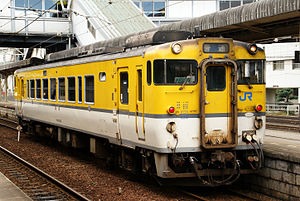Gantoku_Line
The Gantoku Line (岩徳線, Gantoku-sen) is a 43.7 km (27.2 mi) railway line operated by West Japan Railway Company (JR West) in western Japan, connecting Iwakuni Station in Iwakuni, Yamaguchi, and Kushigahama Station in Shūnan, Yamaguchi. The line was originally built as a more direct route between its termini than the original Sanyo Main Line (see History section below) and the Sanyo Shinkansen is more closely aligned to this line than the Sanyo Main Line in this section.
